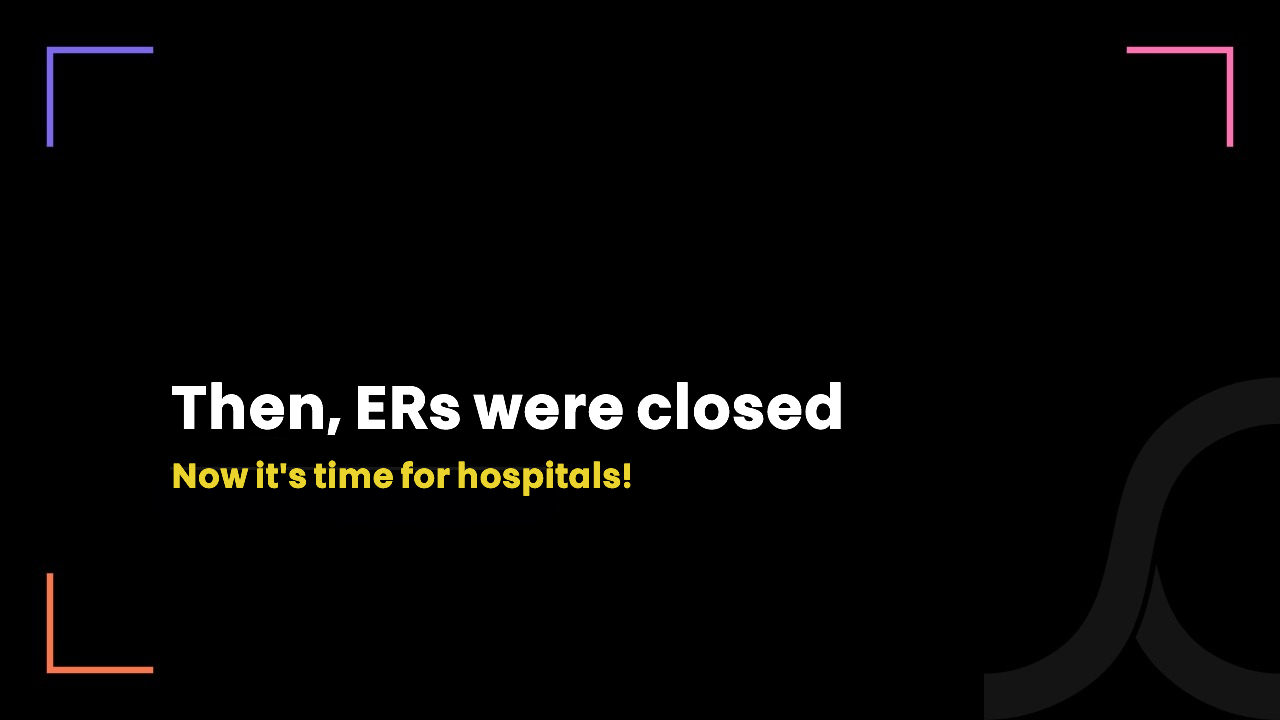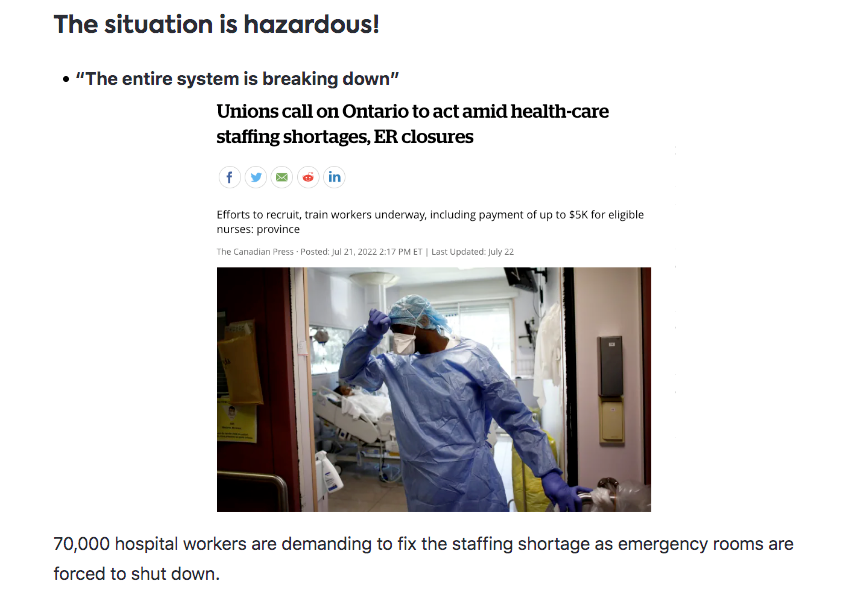How to Fix Waiting Time in Emergency Department?

2 years ago
We are a healthcare IT company based in Ontario.
Means, we are completely familiar with our so-called modern healthcare ecosystem.
The past few months have proved that Canadian healthcare is drowning due to waiting time in emergency departments, medical staff, and hospital bed shortages.
As responsible citizens and healthcare IT experts, we are trying to share our thought on fixing this crisis via this blog.
The Canadian healthcare ecosystem is collapsing due to waiting time in emergency departments and hospital bed shortage
Almost 2 months ago, we shared the news regarding the healthcare staffing shortage in Ontario.
At that time, the emergency rooms were shut down due to staff shortages.

And now, the patients are suffering in the ERs hallways due to the hospital bed shortage and waiting time in the emergency department.
For instance,
1. 12 injured patients waited long hours at the ERs entrance
The situation was hazardous when 12 injured patients including trauma and stroke with brain bleed waited long hours in Manitoba’s largest HSC (Health Science Centers) due to the waiting time in the emergency department.
In addition to this, for new admission to the hospital, the waiting hours are a minimum of 170 hours (more than one week) in the ERs in order to get a bed.
Here is what the doctor said about the situation.
- Never have I ever seen a crisis like this
- Nurse shortage restricting us to speed up the treatment approach for the existing patients in the hospital
- HSC has now zero capacity to treat patients
(Source: CBC News)
2. Ontario man with cancer is stuck in the B.C. hospital
Brian Wootton fell ill when he and his wife were on a trip to the west coast. So, he was admitted to Royal Jubilee Hospital in Victoria, B.C.
The hospital continuously filed a request to transfer Brian to his home nearest hospital Grey Bruce Health Service.
But the hospital was running at its full capacity. So, there were no beds available for Brian.
What’s more, Grey Bruce Health Service has postponed multiple surgeries due to the hospital bed shortage and a long waiting time in emergency department.
(Read the entire news here)
3. Waiting time in the emergency department results in partially paralyzing
B.C. woman Lorrie Williams suffered a stroke when she was with her friend.
Her friend directly called 911 immediately but the ambulance arrived almost 1 and a half hours late.
But it was too late as her body is partially paralyzed on the left side due to the delay in care.
The hospital conducted an investigation for the reason behind the ambulance delay and found that waiting time in the emergency department and staff shortage is the primary factor for this life-threatening situation.
(Explore the full news here)
How to fix the waiting time in emergency department?
Medical staff shortage is the primary factor for that.
A briefing of the challenges facing Canada's universal healthcare services: staff shortage, emergency room closures, longer wait times at emergency rooms. https://t.co/jCDxeDK6QK
— Lauren Ell (@laurenelltalk) September 9, 2022
Canada and the USA are not the only ones who are going through this another pandemic but there is also a huge shortage on the global level.
Here is a screenshot of the current scenario in the USA.

The prior reason behind the crisis.
- High work burden on the nurse
- Inconvenient scheduling timings
- Mentally and physically exhausted due to the time-consuming processes
Addressing the healthcare staff shortage is the only workable solution to fix the long waiting time in the emergency department.
To do so, there are two approaches.
1. Government should focus on speeding up the hiring process
There is zero possibility of hiring a medical staff with the same old-age work benefits. Here are a few ideas that can help.
- Offer a convenient work-life balance
- Provide financial incentives
- Promote hourly-based work model
2. Healthcare entities need to focus more on the technology
Health tech solutions are playing an important role in reducing the work burden and burnout of healthcare workers.
For instance,
- It ensures operational efficiency.
- No need for manual data entry
- Reduces the medical errors
- Streamlines the clinical workflows that give less stress to medical staff
- Assist the healthcare workers in providing faster, accurate, and reliable care delivery
Last but not least, it saves operational, resources, and overhead costs for the healthcare entities which they can use in improving the financial incentives of the medical staff.
That’s all.
The fusion of healthcare passion, dedication, and technology has the ability to address the current crisis!
